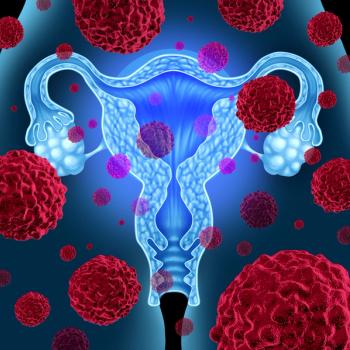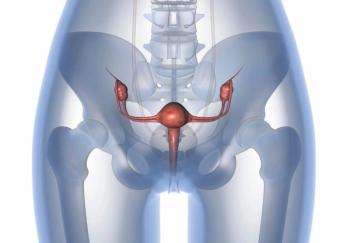
- ONCOLOGY Vol 10 No 10
- Volume 10
- Issue 10
Genetic Tests Further Complicate Ovarian Cancer Controversies
Oncologists still have no screening test that reliably can detect ovarian cancer in its early stages, and recent genetic advances, while shedding new light on the disease, have further complicated the issue.
Oncologists still have no screening test that reliably can detectovarian cancer in its early stages, and recent genetic advances,while shedding new light on the disease, have further complicatedthe issue.
"The recent identification of many of the genes responsiblefor inherited ovarian cancer risk has added further complexityand controversy to screening efforts," said Beth Y. Karlan,md, director of the division of gynecological oncology, Cedars-SinaiMedical Center, Los Angeles, and associate professor of obstetricsand gynecology, UCLA School of Medicine.
Evidence suggests the BRCA1 and BRCA2 genes account for only about5% to 10% of all breast and ovarian cancers, but probably causemost cases of familial breast-ovary cancer syndrome and site-specificovary cancer syndrome, she told the American Cancer Society'sNational Conference on Cancer Prevention and Early Detection,sponsored, in part, by the Centers for Disease Control and Prevention.
MLH1 and MSH2, both DNA mismatch repair genes, appear responsiblefor many cases of the familial cancer syndrome or Lynch syndromeII, including ovarian, endometrial, and nonpolyposis colon cancers,she said. However, she added, "the clinical usefulness ofthese new genetic tests is still uncertain."
BRCA1 Testing Most Controversial
The most notable controversy surrounds BRCA1 testing, she said.Women with BRCA1 mutations have an estimated risk of 48% for ovariancancer and 87% for breast cancer by age 70. The list of BRCA1mutations is both long and growing. Recently, investigators havefound that about 1% of Ashkenazi Jewish women (Eastern Europeandescent) carry a specific mutation, known as 185delAG. As a resultof such findings, requests from asymptomatic women for BRCA1 screeninghave soared.
However, Dr. Karlan said, "The number of scientific uncertaintiesthat exist due to the heterogeneity of the BRCA1 phenotype anddifferences in disease penetrance make medical recommendationsbased on these findings difficult."
Effectively screening asymptomatic women could markedly reducethe toll from ovarian cancer. Projections put its 1996 death tollin the United States at 14,800 and the number of new cases at24,700.
"With symptoms rarely present in early disease, the majorityof ovarian cancer patients first seek medical attention only afterthe tumor is already metastatic," Dr. Karlan noted. "Stagefor stage, however, ovarian cancer has approximately the sameprognosis as breast cancer. Finding an effective means of earlydetection for asymptomatic women would likely shift the stagedistribution of ovarian cancer to favor earlier stage diseaseand thereby improve the survival and quality of life for thesewomen."
Little Change Since 1994 Consensus Conference
Dr. Karlan said little had changed, however, to clarify the usefulnessof screening asymptomatic women since the National Institutesof Health's 1994 Consensus Conference on Ovarian Cancer. Its reportconcluded that scientific data did not support the general useof the best studied and most commonly used screening tests, transvaginalsonography and the CA 125 serum tumor marker. It further warnedthat the test might increase rather than decrease morbidity andmortality by increasing the number of unnecessary bilateral oophorectomiesamong screened women.
Transvaginal sonography can show changes in the structure of theovaries, but the specificity of these changes have proved a problem.To improve transvaginal sonography's accuracy in ovarian cancerscreening, a number of teams have coupled it with color Dopplerimaging. "Unfortunately, in the screening setting, colorDoppler has not been able to reliably detect tumor-associatedneoangiogenesis," Dr. Karlan said.
CA 125, an antigen shed by the majority of epithelial ovariancancers, has not proved successful in screening asymptomatic womenfor early tumors, she added, in part because of "the largenumber of benign conditions that are associated with CA 125 elevation,as well as the fact that CA 125 is only elevated in 23% to 50%of patients with stage I ovarian cancers."
Nonetheless, the consensus panel did urge that high-risk womenundergo annual pelvic and rectovaginal examinations and transvaginalsonography and CA 125 screenings.
Dr. Karlan also noted that transvaginal sonography and CA 125are currently being evaluated in high-risk women as part of theNational Cancer Institute's PLCO (prostate, lung, colon, and ovary)cancer screening trial. Study investigators plan to ultimatelyenroll a total of 74,000 women over age 60 for ovarian cancerscreening.
"While some investigators have debated the cost effectivenessof the currently available screening modalities, we must firstdetermine the effectiveness of these tests in diagnosing earlyovarian cancer and in reducing disease-specific mortality,"she said.
Dr. Karlan also cited significant barriers to developing effectivescreening tests. The location of the ovaries within the peritonealcavity greatly limits access for direct examination. Furthermore,and because the cancer frequently has reached an advanced stagebefore detection, researchers have had difficulty in identifyingearly genetic alterations and other factors that lead to the transformationof ovarian cells.
Nonetheless, investigators have turned to a number of novel approachesto explore the physical and molecular characteristics of ovariantumors, she said. The Human Genome Project and other moleculargenetics findings are providing insights into carcinogenesis thatcould have important implications for the malignancy.
"Ovarian cancer is a serious disease of increasing magnitude,"she concluded. "A clinically applicable marker for earlydisease detection is urgently needed to reduce disease mortality."
Articles in this issue
about 29 years ago
New Cancer Gene Marker Could Help Tailor Chemotherapy for Breast Cancerabout 29 years ago
Cigarette Smoking Among Adults--United States, 1994about 29 years ago
New Clues To Cancer Growth Discoveredabout 29 years ago
Survey Results: Kicking the Habit Tough for US Tobacco Farmersabout 29 years ago
Nursing Challenges of Caring for Patients with HIV-Related Malignanciesabout 29 years ago
Possible New Approach to Preventing Chemotherapy Drug ResistanceNewsletter
Stay up to date on recent advances in the multidisciplinary approach to cancer.
















































































